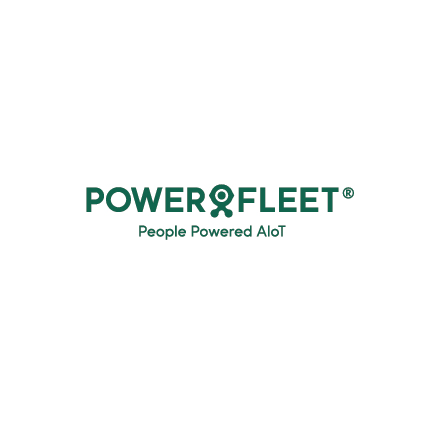Drivers are the lifeblood of any trucking business. According to a 2021 ATRI report, driver wages and benefits represent a marginal cost of about $0.74 per mile or 45% of the total marginal cost per mile. Meanwhile, the ATA expects driver shortages to rise from 80,000 positions to over 160,000 jobs by 2030, driven by retirements and growing demand.
At the same time, the cost of mistakes has never been higher. The FMCSA reckons there were 155,585 large truck and bus crashes, 76,705 injuries, and 4,751 fatalities in 2020. According to the ATRI, the average jury verdict from a fatal trucking accident rose from about $2.3 million to nearly $22.3 million between 2010 and 2018—a 967% increase.
Let’s take a look at four ways to keep drivers safe and happy to minimize turnover while maximizing safety.
Drivers are the lifeblood of every trucking business—and it can be tricky to balance safety and morale. Compartir en X#1. Double Down on Training
The best way to maximize safety without hurting morale is to build a safety-first culture with a robust driver education and training program. For example, businesses should have reasonable expectations for delivery times, managers should invest time and effort in proper training, and drivers should default to safe behaviors.
Some good questions to ask include:
- Are new hires familiar with all of your safety policies?
- Does everyone have access to training documentation?
- Do you regularly check for compliance with these policies?
- Is there documentation in place to prove training took place?
- Are you using modern technology to make training effective?
- Do you monitor and retrain drivers that exhibit unsafe behavior?
It’s also essential to provide ongoing reviews and retraining when necessary. According to a 2015 PIT study, drivers that receive ongoing reviews after their training show an eight to 15 percent improvement over those that do not. Those that didn’t receive follow-up reverted to their original driving habits within two months.
#2. Update Your Telematics
Telematics play a vital role in fleet safety by monitoring everything from driver behavior to engine performance. But, unfortunately, many businesses leverage little more than standard Electronic Logging Devices (ELDs) with GPS capabilities. Even worse, some fleets are still using legacy 3G networks that will sunset this year, which can cause significant disruptions.
The FCC notes that 3G sunsets are already happening:
- AT&T announced that it would finish shutting down its 3G network by February 22, 2022.
- T-Mobile announced that it would finish shutting down Sprint’s 3G CDMA network by March 31, 2022, and Sprint’s 4G LTE network by June 30, 2022. It also announced it would shut down T-Mobile’s 3G UMTS network by July 1, 2022, but has not yet announced a shutdown date for its 2G network.
- Verizon announced that it would finish shutting down its 3G network by December 31, 2022.
In addition to upgrading to 4G LTE networks, fleets should consider investing in new capabilities. For example, Powerfleet’s in-cab ELD compliant solution goes beyond regulatory compliance to deliver real-time position reports, engine performance information, two-way communication with drivers, and full TMS integration.
Fleets can also leverage telematics across other assets:
- Dry Vans – Remotely determine load status, monitor cargo conditions (e.g., temperature, humidity, or pressure), and detect when doors are opened or closed. With Powerfleet’s solutions, you don’t need to worry about external power sources because solar capacitors and long-lasting batteries provide years of maintenance-free performance.
- Reefers – Remotely manage the reefer engine, alarms, and sensors without the trailer, monitor and set temperatures, and initiate trip needs, like defrost. These capabilities help fleets adhere to FDA Food Safety Modernization Act (FSMA) rules and meet customer quality control expectations. For instance, Powerfleet’s solutions feature cold chain monitoring solutions with dual-mode control across multiple zones, along with two-way command and control.
- Chassis – Track the chassis location across internal fleet and intermodal venues while detecting bare, mounted, loaded, and other statuses by measuring weight. In particular, Powerfleet’s chassis solutions feature advanced sensors that detect when a container is mounted and dismounted from the chassis, providing hard proof to back up billing disputes.
- Containers – Detect the location and load status of containers from the yard until they reach the final destination, enabling you to reduce cycle times and maximize utilization. Powerfleet’s container solutions even provide real-time weight sensors that eliminate the need for manual yard checks and provide an added level of visibility.
- Cargo – Monitor cargo with cameras and sensors to maximize visibility and efficiently analyze claims.
Implementing best of breed telematics solutions across your fleet can help maintain safety with drivers as well as equipment. Of course, the right software is critical to translate these data points into actionable intelligence. For example, Powerfleet provides an easy-to-use dashboard that aggregates these data points and makes it easy to do everything from tracking fleet assets in real-time to accessing KPIs that can help fleets spot trends and patterns to address unsafe processes or behaviors.
In addition, Powerfleet’s telematics integrate with an easy-to-use cloud-based platform where you can access actionable insights. The platform also integrates with third-party systems, such as TMS or ERP systems for customized analysis and KPIs.
#3. Adopt Dash Cameras
Dash-cams augment telematics data with visual evidence to enforce safety policies, exonerate drivers in accidents, and aid security and theft recovery efforts. For example, Powerfleet Vista delivers real-time high-definition video from road and driver-facing cameras that managers can access through an intuitive interface from anywhere in the world.

Powerfleet Vista adds real-time visibility to your fleet assets. Source: Powerfleet
Dash-cams have a mixed reputation among drivers, making their buy-in essential for success. Before installing dash-cams, managers should clearly explain why they’re necessary and how you’ll use them. In particular, it’s vital to explain that managers will never “spy” on drivers. Then, allow drivers to voice any concerns and ask questions.
#4. Start Incentive Programs
Research shows that incentive programs are more effective at changing behavior than disciplinary programs. For example, one study found that an electronic board praising hand-washing was 90% effective within four weeks compared to the 10% effectiveness of cameras and warning signs showing the dangers of not washing hands.
The data from telematics solutions opens up the door to new possibilities. For example, fleet managers can see the number of times drivers harshly brake, suddenly accelerate, or speed. While most companies penalize or retrain offenders, a better approach is building a safety incentive program that encourages safe driving behavior.
A common approach uses telematics-powered safety scorecards. These scorecards might include speeding, attendance, scheduling, near misses, seatbelt usage, idle time, and driving records. If drivers meet specific criteria, they may be eligible for cash bonuses, vacation time, paid lunches, or other desirable incentives.
The Bottom Line
The balance between fleet safety and driver morale is critical to the success of any trucking business. By building a culture that respects and values safety, you can minimize safety incidents and more easily defend the company against nuclear lawsuits if a fatal accident happens.
Telematics are key to unlocking many of these benefits. If you’re looking to upgrade your telematics, contact us for a free consultation or browse our product catalog to learn more.






